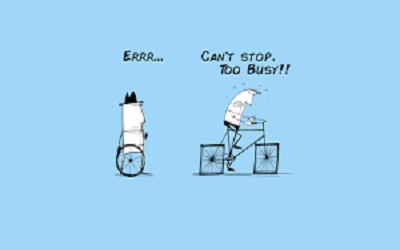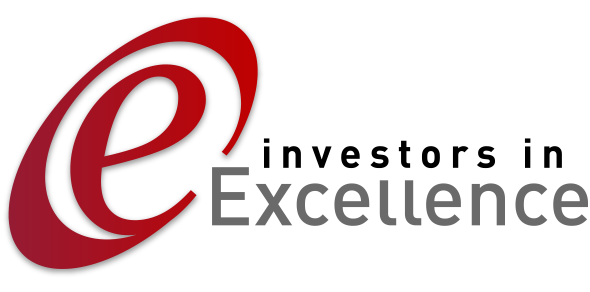 Continuous improvement is an attitude and methodology that can drive an organisation from being good to being great. The most successful users of the continuous improvement approach exhibit a consistent rise in the quality of performance in their organisations.
It is very important to appreciate that the advantages gained from following this approach will come not only by doing more good things, but also from doing fewer bad ones. The best organisations make time to allow evaluation of what items can be improved.
Continuous improvement is an attitude and methodology that can drive an organisation from being good to being great. The most successful users of the continuous improvement approach exhibit a consistent rise in the quality of performance in their organisations.
It is very important to appreciate that the advantages gained from following this approach will come not only by doing more good things, but also from doing fewer bad ones. The best organisations make time to allow evaluation of what items can be improved.
Reducing and removing the bad parts of a
process has the greatest effect when it is applied to waste that has been identified in an operation that occurs as part of producing the product or service that an organisation delivers to its customers. Improving the business process should be part of every action carried out within an organisation. Two methods that are able to be used are 5S and Kaizen, both originating from Japan.
5S
5S is a productivity method whose name is derived from the five first letters of Japanese words. The method was originally intended to organize a workspace for efficiency. It comprises:
- Seiri – Sorting. Keep the necessary in work area, dispose or keep in a distant storage area less frequently used items, discard unneeded items.
- Seiton – Systematic Arrangement. There should be a place for everything and everything should be in its place, clearly labeled or demarcated.
- Seiso – Shining. Clean the workspace and all equipment, and keep it clean, tidy and organised.
- Seiketsu – Standardising. Work practices should be consistent and standardised.
- Shitsuke – Sustaining. Once the previous 4 S’s have been established, they become the new way to operate. The effect of continuous improvement (Kaizen) leads to less waste, better quality and faster lead times.
5S was originally intended for manufacturing can be applied across other work areas. In healthcare for example, it has been seen that an organisation achieves:
- higher productivity.
- fewer clinical defects.
- shorter patient waiting times.
- a safer place to work.
Kaizen
The word Kaizen means “continuous improvement.” The method and the word have become to mean small, continuous improvements on everyone’s part. Kaizen is a system that involves all employees – from senior management to front line operatives. Everyone is encouraged to come up with small improvement ideas and recommendations on a regular and continuing basis. Kaizen is based on always improving productivity, safety and effectiveness while reducing waste.
Kaizen suggestions are not limited to a specific area, but based on making changes anywhere that improvements can be made. It involves setting standards and then continually improving them. Kaizen also involves providing the training, materials and supervision that is needed for employees to achieve the higher standards and maintain their ability to meet those standards on an on-going basis. The cycle of kaizen activity can be defined as:
- Standardise an operation and activities.
- Measure the standardised operation.
- Gauge measurements against requirements.
- Innovate to meet requirements and increase productivity.
- Standardise the new, improved operations.
- Continue the cycle continuously.
At IiE we utilise a selection of tools and methodologies to improve what organisations achieve in a sustained fashion. To learn more, please take a look at the
Approaches and
Business Improvement Toolkit our specialists use to add value to organisations on a daily basis.
 Continuous improvement is an attitude and methodology that can drive an organisation from being good to being great. The most successful users of the continuous improvement approach exhibit a consistent rise in the quality of performance in their organisations.
It is very important to appreciate that the advantages gained from following this approach will come not only by doing more good things, but also from doing fewer bad ones. The best organisations make time to allow evaluation of what items can be improved.
Reducing and removing the bad parts of a process has the greatest effect when it is applied to waste that has been identified in an operation that occurs as part of producing the product or service that an organisation delivers to its customers. Improving the business process should be part of every action carried out within an organisation. Two methods that are able to be used are 5S and Kaizen, both originating from Japan.
Continuous improvement is an attitude and methodology that can drive an organisation from being good to being great. The most successful users of the continuous improvement approach exhibit a consistent rise in the quality of performance in their organisations.
It is very important to appreciate that the advantages gained from following this approach will come not only by doing more good things, but also from doing fewer bad ones. The best organisations make time to allow evaluation of what items can be improved.
Reducing and removing the bad parts of a process has the greatest effect when it is applied to waste that has been identified in an operation that occurs as part of producing the product or service that an organisation delivers to its customers. Improving the business process should be part of every action carried out within an organisation. Two methods that are able to be used are 5S and Kaizen, both originating from Japan.
